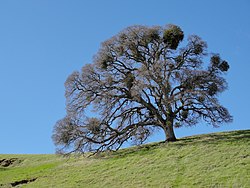Introduction
In 1993, The Jepson Manual estimated that California was home to 4,693 native species and 1,169 native subspecies or varieties, including 1,416 endemic species. A 2001 study by the California Native Plant Society estimated 6,300 native plants. These estimates continue to change over time. [2]
Of California's total plant population, 2,153 species, subspecies, and varieties are endemic and native to California alone, according to the 1993 Jepson Manual study. [4] This botanical diversity stems not only from the size of the state, but also its diverse topographies, climates, and soils (e.g. serpentine outcrops). Numerous plant groupings exist in California, and botanists work to structure them into identifiable ecoregions, plant communities, vegetation types, and habitats, and taxonomies. [4] [5]
California native plants include some that have widespread horticultural use. Sometimes the appreciation began outside of California—lupines, California fuchsias, and California poppies were first cultivated in British and European gardens for over a century. [6]
Environmental challenges
Some California native plants are in rapid decline in their native habitat due to urban sprawl, agriculture, overgrazing, recreational impacts, pollution, and invasive non-native species (invasive exotics) colonization pressures (animals and other kingdoms of life, as well as plants). [17]
California also has 1,023 species of non-native plants, some now problematic invasive species, such as yellow star-thistle, that were introduced during the Spanish colonization, the California Gold Rush, and subsequent immigrations and import trading of the 18th, 19th and 20th centuries.
This page is based on this
Wikipedia article Text is available under the
CC BY-SA 4.0 license; additional terms may apply.
Images, videos and audio are available under their respective licenses.














